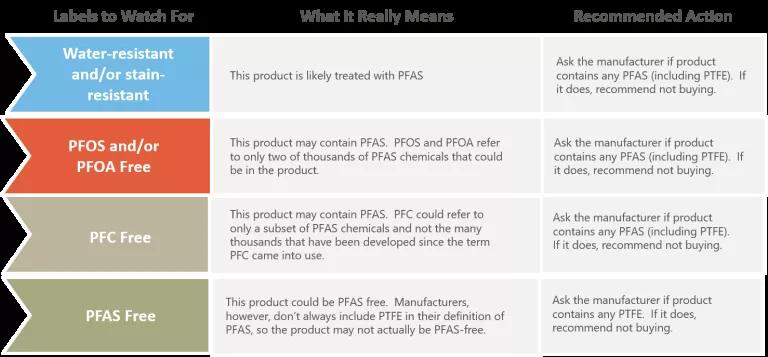North Face and Timberland Recognize PFAS Threat in Apparel
Today, VF corporation, owner of multiple well-known American brands including The North Face and Timberland, announced its plans to phase out toxic per- and polyfluoroalkyl substances (PFAS) from all of its product lines, a step forward for public health and the environment.

Figure 1 Ways that PFAS-Coated Apparel can Pollute our Water Supplies
Today, VF corporation, owner of multiple well-known American brands including The North Face and Timberland, announced its plans to phase out toxic per- and polyfluoroalkyl substances (PFAS) from all of its product lines, a step forward for public health and the environment. As evidenced by its announcement, VF recognizes the harm posed by all PFAS chemicals and commits to phase out the majority of them by 2025. It does not, however, establish a timeline to phase out PTFE—a known PFAS chemical widely used throughout the outdoor industry for water and stain resistance. To combat the growing PFAS crisis, VF should establish a concrete timeline to eliminate PTFE from its supply chain.
The problem with PFAS
PFAS are a large family of more than 9,000 chemicals that are highly mobile and difficult to destroy. Using and manufacturing PFAS has resulted in significant contamination of our water supplies (see Figure 1) as well as our food, air and homes. PFAS is associated with a host of health problems ranging from elevated cholesterol to cancer.
What brands can do
Addressing PFAS use/phase out could be complex and requires commitments from policy makers, regulators, consumers, and brands. The first step is for apparel brands to discontinue using PFAS in their products—a commitment many retailers have made across the globe.
It’s also crucial that apparel brands and retailers clearly label clothing, accessories, and gear that contain PFAS. This is essential to help consumers make informed purchasing decisions based on their values and what matters most to them. But, labeling can be confusing and sometimes downright misleading.
Scientists and health advocates at NRDC have crafted a set of easy-to-use guidelines for consumers who are looking to understand PFAS labeling. Consumers can also use this guide to ask follow-up questions of manufacturers and retailers.
Consumer Guide to PFAS and Labels





